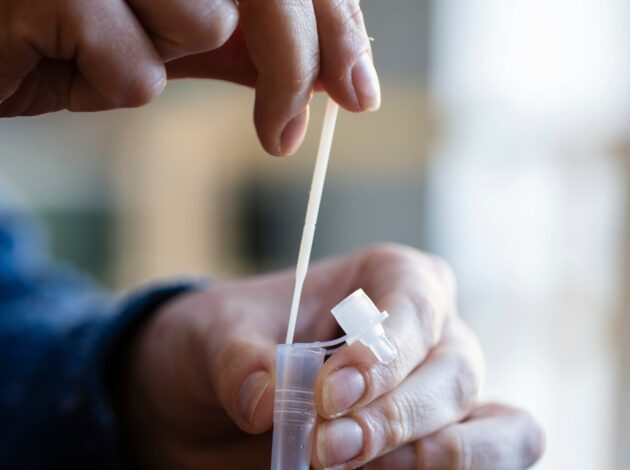Exploring findings from the Winter COVID-19 Infection Study

In November 2023 ONS and UK Health Security Agency (UKHSA) launched the Winter COVID-19 Infection Study (Winter CIS) to gather vital data on levels of the virus in the colder months. James Tucker explores some of the findings and takes a deeper look at what they can tell us about ongoing symptoms and risk factors.
The Winter CIS ran between November 2023 and March 2024 in England and Scotland and around 125,500 participants took part. Each participant was sent a questionnaire and asked to take a Lateral Flow Device test every four weeks for the detection of COVID-19. If participants tested positive, they were asked to test every other day and report their results and symptoms until they tested negative.
Over the course of the study, ONS published data on test positivity and symptoms. The data collected has been used by the UKHSA to understand changes in the infection hospitalisation rate, enabling them to assess potential increased demand on health services.
Our findings from November 2023 to March 2024 showed a peak in Covid rates in a two-week period from mid-December. Alongside this, we also know from the prevalence data published by UKHSA that the virus was less prevalent in the oldest age groups (those age 65 and above).
Shining a light on long Covid
We know that understanding of long Covid is still developing, which is why data from those impacted is so valuable.
Our results showed an estimated 2 million people were experiencing self-reported long Covid during the study period, with nearly a third experiencing symptoms for at least three years. The most common symptoms reported were weakness or tiredness, shortness of breath and difficulty concentrating.
Self-reported long Covid was most common in people aged 45 to 64 years and among women. We also saw higher levels of long Covid in those who were not working and not looking for work. In line with previous work, this study highlights the impact long Covid can have on someone’s life. Nearly 75% of those with self-reported long Covid said their symptoms adversely impacted their day-to-day activities, and a further fifth told us their ability to undertake day-to-day activities has been “limited a lot”.
What else did we learn about Covid infections?
By drawing together finding from across the study we can identify characteristics of those who test positive and those who don’t.
We can see that people who have had a vaccine since September 2023 were less likely to test positive in the early waves of the study, but by later waves of the study the difference was no longer noticeable.
The oldest age groups (65-74, 75+) and youngest age groups (3-17) were less likely to test positive for Covid than 45-54 year olds.
People living in Scotland were typically less likely to test positive than people living in the South East of England. For participants of working age (18-64), those working in teaching and education were typically more likely to test positive compared to those who were unemployed or economically inactive. For those employed in other work sectors there was no clear or consistent difference in the likelihood of testing positive.
What are the most common symptoms?
For participants who tested positive for Covid, the most reported symptom, for both males and females and all ages, was a runny nose, followed by a cough. Other common symptoms were tiredness, a sore throat and a headache. These findings are similar to the results seen in the Coronavirus Infection Survey. Interestingly though, we saw that the percentage of people with Covid who reported each symptom was higher among participants in the winter study. It’s not possible to say whether this is down to a change in the nature of the virus. It could also reflect differences in the survey or how people answered questions.
A partnership
The Winter CIS has built on our experience of running the gold standard Coronavirus Infection Survey, which we delivered in partnership with Oxford University and UKHSA. We are proud to have delivered Winter CIS in partnership with UKHSA. There were around 125,500 other partners; the study participants, to whom we’re very grateful. Those taking part represented a wide range of ages and communities and their input allowed us to analyse around 32,000 lateral flow tests a week. This provided timely understanding of potential health pressures over the winter period.
We had some great feedback from participants who told us how easy the survey was to complete and how they valued being part of this important work.
“Excellent survey very clear questions. Quick and easy to complete.”
“I am happy to take part, hope the information I give is useful in planning for any future outbreak.”
Going forward, our learning from the study and feedback received will help with development of programmes to capture data on other respiratory viruses and infections if needed.
For more information about the Winter CIS visit our study pages.

Dr James Tucker, Deputy Director, Winter CIS